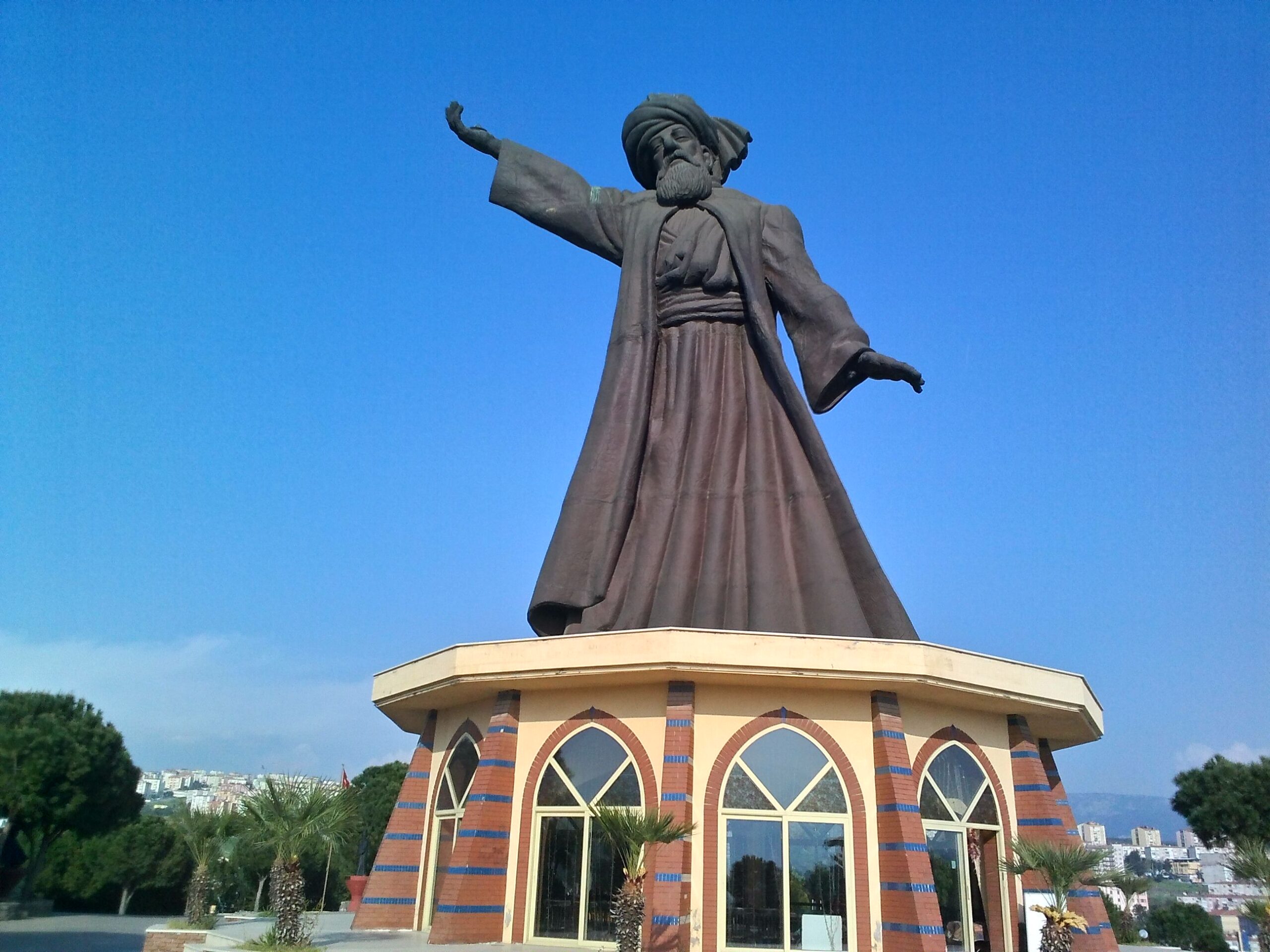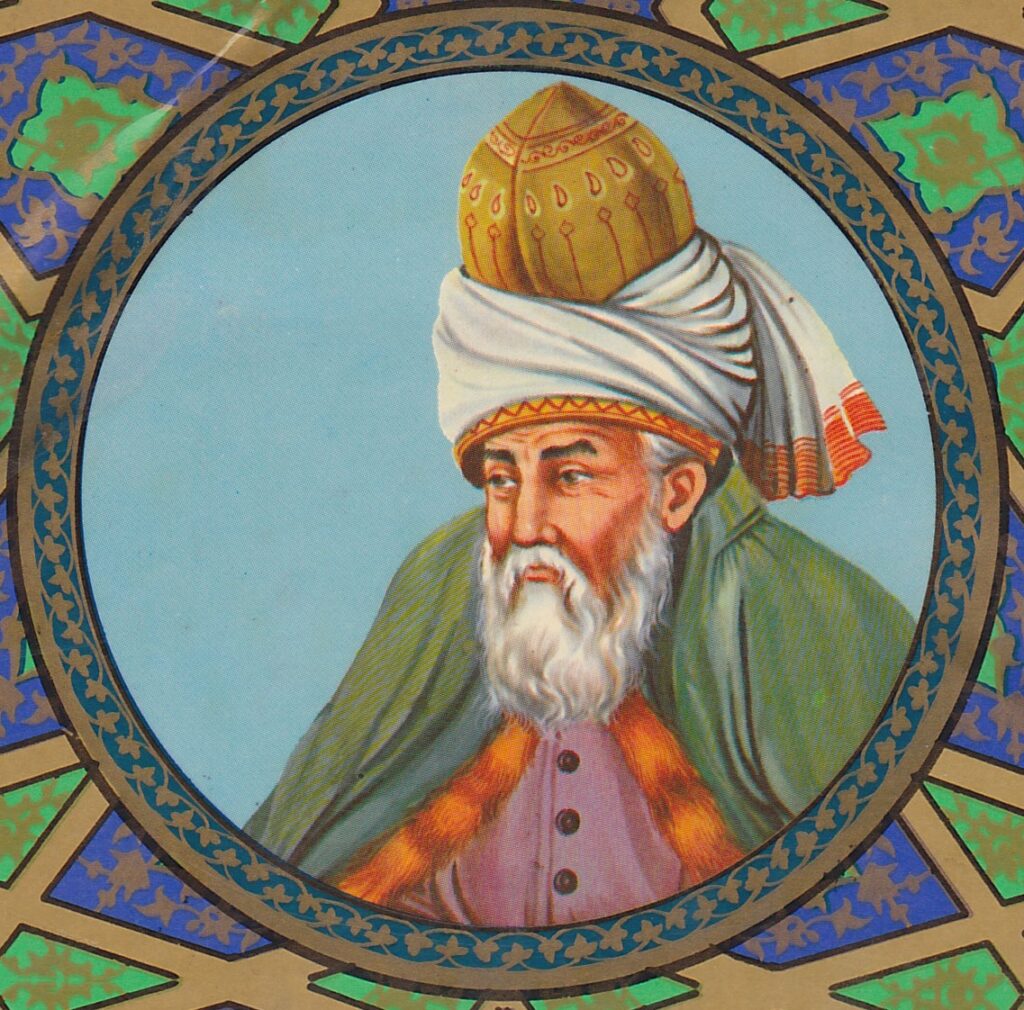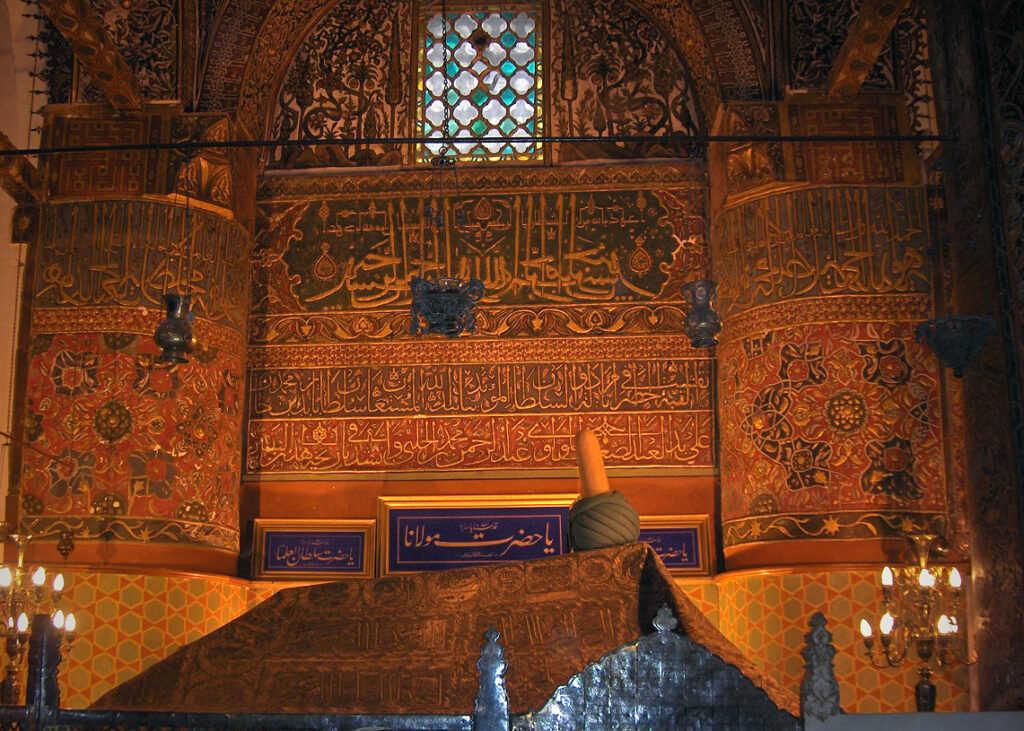
Rumi, The Silk Route and Indian Sub-continent
Abstract:
The great Sufi poet and mystic Mawlana Jalaluddin Rumi’s poetry, philosophy, message and teaching has been inspiration for the whole humanity for over seven centuries, but the greatest imprint of his personality can be seen on the region traversed by the silk route. This region, unlike the West where Mawlana is mostly discovered in recent time; besides popular renderings which created the appreciation of Rumi the mystic, boasts the great understanding of the religious and spiritual traditions from which the great mystic emerged. The proposed paper aims to encompass the spiritual and intellectual voyage of Mawlana during his life time as well as the virtual journey of his legacy afterwards in the region. Besides, how his legacy has left its mark on the different and diverse facets of intellect and life in referred part of the world. This specially includes his poetry, mystic writings and traditions, and the writings of those of the region who followed the path of Mawlana, and to mention a few among many of mystics and poets are like Jami, Bu-Ali Shah Qalandar and Iqbal.
Introduction
The region of origin and emergence of Mawlana Rumi was traditionally to a certain extent similar to the region of Buddhist expansion alongside the great arteries of the Northern and Southern Routes of the Indian subcontinent, the Old Road to Bactria, and passageways through the mountain valleys of northern Pakistan. Mawlana’s spiritual and philosophical impact centers developed distinctive spiritual cultures and played central roles in trans-regional exchanges.
Ferdinand Von Richthofen had termed the Trans-Asian overland networks as the “Silk Route” or “Silk Road” in the late nineteenth Century, which includes various primary arteries and secondary capillaries used for a range of commercial and cultural exchanges, including the diffusion of different religious and socio-cultural ideas, trends and traits including Sufism from the boarders of Europe to Eastern Asia, encompassing Central and South Asia. Roughly, this road extends from Rome to China which includes western and eastern Central Asia i.e. modern day’s newly independent republics which were formerly known as Soviet Turkistan and adjoining regions which also connects North Western portions of Indian subcontinent. These routes though sometime not well defined or fixed roads were utilized for spiritual and religious interaction, cultural relations, commercial exchanges and political and military expansion. Therefore, though Silk Road commonly linked with sumptuous exchanges of commercial commodities in the region but its cultural, historical and sociopolitical importance has been equally significant throughout the ages; thus looking at the relevance of Rumi’s message and philosophy and its impact and legacy in historical context will be enlightening.

Rumi’s Poetry and the Silk Route
Though, Rumi has now a global appeal but traditionally he lived, studied, traveled, interacted, worked and left his legacy within and around the Silk route region. He is rightly considered the cultural icon of many nations of the region besides Turkey. He was born (at the place called Wakhsh) near Balkh, a major center of learning for centuries and as a child travelled
along with his father through Iran to Baghdad, Damascus, Arginjan, Larenda and to Qonya where he finally settled down during the Seljuq Sultan Alauddin Kayqubad and thus was called Rumi. He grew up under the guidance of his father Bahauddin Walad titled as Sultanul-Ulama who was a great scholar and Sufi of his era. Besides he also studied at Aleppo and Damascus where he first encountered his great friend and spiritual guide
Shamsuddin of Tabrez to whom he had dedicated his collection of Ghazaliat as Diwan e Shams e Tabrezi. His second encounter with the mystic at Qonya is surrounded with mysteries and many stories are narrated about it, which nonetheless changed the course of his life. Even the place of origin of Shamsuddin Tabriz is also not known, different scholars have different opinions. J.P. Brown in his book Darvishes calls him a Qalandari or wanderer Dervish, while according to H.A.Rose, he was probably of Indian origin who identified himself with Shamsuddin Tapriz of Multan, a great contemporary saint and who got the sobriquet of Tap-riz or ‘heat-pouring’ because he braught the sun closer to that spot. Dr. Rasih Guven too supports this view and states that his father Khawand Alauddin was an Indian and a new convert to Islam and his name was Govind, a Sanskrit word. But according to Tazkira-I Daulwlat Shah, he belonged to the family of Buzurg Ummid which ruled Almowt, a place near Qazwin in Iran, but his father secretly sent him to pursue education in Tabrez, where he stayed for a long period and thus known as Tabrezi. Though, Shams Tabrezi popularly believed as mere wanderer Darvish is not correct, but he was a great scholar too and had expressed his incisive views about many issues of the religion and Sufism which is recorded in book titled as Maqalat e Shams Tabrizi by Sultan Walad.
Nonetheless, Rumi’s first Sufi guide was Sayyed Burhanu’d-din Termezi, who was his father’s foremost spritual disciple who rushed to Anatolia hearing the death of Rumi’s father.
Beside them, the two close associates of Rumi were Salahuddin Faridun Zarkub and Husamuddin Chelibi. The later was the inspiration for compostion of Masnavi e Ma’navi and therefore it is also called as Husamnama. This book of six volumns contains 26660 couplets, according to some took forty three years to complete, and during the composition of Masnavi, he was totally engrossed, and afterwards he entirely retired from the world.
A historian and a disciple of the Maulawia order Shamsuddin Ahmad Aflaki records his view in his book Manaqibul-Arefin that it was the year 1246 AD when Rumi initiated Maulawi Order of Darvishes in the memory of Shamsuddin Tabrizi. It was devised in a manner to attract people to spirituality and its exercises through art and music which would finally develop strive among them for a knowledge of divine mysteries.
Though Mawlana lived for more than a half century among the Turki speaking masses but he wrote only in Persian, nonetheless, his personality and poetry influenced Turkish poetry and set a new trend of spiritual poetry among the contemporary poetry and poets. This trend survived for a long period among the Turkish poets. Though such poetry was not new in
Persian language and there were sufi poets of great repute like Abu Said Abul Khair, Khwaja Abdullah Ansari, Fariduddin Attar and Sanai Ghaznavi who had enriched Persian poetry with the spiritual discourses as Mawlana Rumi himself says about Attar and Sanai whom he considers his worthy predecessor that:
Attar Rooh bood o Sanai du chashm e oo
Ma az paye Sanai o Attar amadeem
(Attar was the soul and Sanai was like two eyes (of spirituality), and we followed the path of the two.)
He adds that:
Haft shah’r e eshq ra Attar gasht
Ma hanooz andar kham e ek kuche-yim
(Attar trvelled the eight kingdoms of the love/solook; but we are stranded only on the turn of a lane.)
But as matter of fact Mawlana took the sufi Persian poetry to a new hight and a greater stage through his Masnawi as Prof. Gibb says: ‘This great poem is one of the greatest and most noble in all Persian literature, which is in clear, simple language, but without apparent order or method, discourses on the doctrine and aspects of the mystic philosophy, and has for ages formed the textbook of the sufi thinkers from the shores of the Mediterranean to the Wall of China.’ Prof. Nicholson who indeed opend up the ocean of Masnawi’s discourses to the English readers goes on to say: ‘the Masnavi represents the Saint not only as a mirror of reality, but also a personage invested with Divine authority and power, an indispensable
guide on the way to God, a physician who can diagnose and cure diseases of the soul, a preacher of the truth and teacher of the law…the law of reverant obedience, through which ‘Heaven was filled with light and the angles became pure and holy.’
When we talk of Mawlana Rumi’s legacy in Silk route, we find many regions and now countries are equally upholding the great tradition of understanding, emulating and following his spiritual, literary and intellectual legacy. This shared reverence for Mawlana was seen in
the 2007 when Afghanistan, Iran and Turkey jointly proposed in UNESCO to celebrate 800th year of his birth anniversary. This was followed by Grand National programs in all three countries besides hundreds of the seminar in these countries and around the world. According to Sepahsalar, Mawlana Rumi had the opportunity to interact with all the venerated scholars and sufis of his era which includes like Sheikh Muhiuddin Akbar, Sadruddin Hamwi, Sheikh Usman Rumi, Sheikh Awhaduddin Kermani, Sadruddin Qunwi etc. But the greatest legacy which connects beyond this and broadens this inheritance of the great legacy is his poetry in Persian, the language shared beyond these countries and in the greater region of Silk route. Mawlana says:
Parsi gu garche tazi khushtar-ast
Eshq ra khud sad zaban-e digar-ast
(Express in Persian even if Arabic may be a superior language — Love will find its ways through hundreds of languages to get articulated.)

That is the reason why Mawlana has been an iconic pesona in all Persian speaking countries and a special bond has been established with the reagion. Mawlana’s contemporary and great Persian poet Sheikh Saadi revered him and paid profound tribute to him, similarly Jami had written extensively on Masnawi and was a great follower of Mawlana. Manaqibul-Arefin mentions that once the king of Shiraz Shamsuddin wrote to Saadi asking him to send a Sufistic Ghazal which could be spiritually stimulant for him, Saadi sent him a Ghazal of Mawlana Rumi which had become very popular among the Qawwals of the time. The king was so inspired that he not only organized gatherings of Sama to sing the ghazal but also sent Saadi to see Mawlana. The influence of Mawlana could easly be sensed in the poetry of Khwajuye Kirmani, Hafiz Shirazi and Shah Nematullah Wali, the leading Persian sufi poets among many others. Today, he is taught in all schools, colleges and universities of these countries, and some of the finest scholars of the Masnawi during modern times have come from the Persianate world like Badiuzzaman Foruzanfar, Jalal Naiyini, Prof. Sabzwari and Dr. Abdul Karim Soroush. Besides Rumi is sung by both folk and formal musicians in this part of world. Though during the Medieval period Ottoman-Safavid mutual political rivalry and religio-sectarian fanaticism debilitated the Persian tradition in Tukey, But Rumi remained
a spiritual and intellectual icon both the side. However, the most zealous and passionate tradition of association with Mawlana and his poetry is seen in the Indian sub-continent since his time till the modern period. This tradition over the period seems to be developed as the institution of understanding Mawlana and his Masnawi among the scholars and sufis of the region. As a result of this tradition, hundreds of commentaries are written on Masnawi in Persian and in different regional languages of India, which belong to different periods of the last eight centuries. According to Riazul-Arefin great Indian Sufi Bu Ali Shah Qalandar is known as one of the companions of Mawlana who stayed with him for a long period. Probably the first book on Mawlana’s poetry during the modern time was written by Allama Shibli Nomani who also happens to be the first Modern literary critic of Persian literature.
Rumi and Indian Sub-Continent
As a matter of fact, baring Sultan Walad, the son of Mawlana, and Ahmad Rumi, one of his students, no valuable commentary could be written on Masnawi-e Ma’nawi till the 16th century when the poets and sufis of Herat school (now in Afghanistan) especially led by the great sufi poet Abdur-Rahman Jami and Mulla Yaqub Charkhi wrote commentaries, and later this tradition travelled to the Indian heartland. Around forty extensive commentaries are written only in Persian language during Medieval India and most of them are now kept in manuscript form in the different libraries of the sub-continent. Among these Persian commentaries, especially the three Asrarul-Ghoyub (by Khwaja Ayyub Lahori), Makhzanul-Asrar by Wali Muhammad Akbrabadi and Sharh-e Masnawi-e Manawi by Abdul-Ali Lucknawi popularly known as ‘Bah’rul-Uloom’ are considered as the most valuable works. Equally a large number of such commentaries and translation are done in Urdu, Hindi, Sanskrit language during the last two hundred years and many of them are very popular among the admirers of Rumi. Similarly innumerable commentaries and translations are also done in other regional languages of the sub-continent. Many poets have written Masnawi in Urdu following the style and content of Masnawi-e-Manawi-e Mawlana. In addition to these commentaries and translations, books and articles on the life, philosophy and legacy of Mawlana Rumi is available in a large number in different languages of the sub-continent.
Rumi himself had imbibed deep influence of India and Indian traditions and was in close contact with some of his Indian contemporaries including his student and sufi poet Bu Ali Shah Qalander. He says in his Masnawi:
Az Kalila baaz khaan in qissa ra
Wandaraan qissa talab kon hissa ra
(Read again the stories of Kalila wa Dimna i.e. Panchtantra; and derive substances for your own enlightenment)
The poets and saints of Bhakti tradition like their Sufi counrterparts too always have been attaracted to the message of Rumi and even today Rumi continue to inspire many including many neo-religious movemnets like Radhaswami etc.
Mawlana’s legacy in the sub-continent would be probably left thirst and incomplete, if Iqbal, the great poet and philosopher of twentieth century India is not mentioned with regards to the philosophical engagement with Mawlana in the region. Iqbal is a distinguished poet-philosopher with mystical vision and amazing erudition but he unhesitatingly considers
Mawlana as his guide and calls him Pir which is a rare tribute by him to any other personality. It is interesting to note that emergence of Iqbal as a prominent poet-philosopher happened after his return from Europe, that was on the ground as he intensely studied Western philosophy and society vis a vis his own deep understanding of Eastern philosophy and tradition especially of Quran, which resulted into his attraction towards Rumi. Iqbal
rightly realized that Mawlana as a thinker preceded of many modern tributaries of thoughts and in fact apparently incorporated Voluntarism and Spritual Pluralism which routes to Philosophers like Nietzsche, Schopenhaur, and Bergson who also happened to be Iqbal’s inspiration. This inspired Iqbal to follow Rumi and consider him as his guide as he “is a disciple who by virtue of his faith, is dyed deep in the spirit of his master.” Iqbal’s philosophical association and engagement with Rumi is indeed his engagement with the whole tradition which Mawlana imbibed; and therefore Rumi is frequently referred in the poetry of Iqbal. Iqbal’s adulation to Rumi can be summed up in this rubayee of him:
Be kaam-e- khud digar aan koh’ne mi reez
Ke ba jaamash na-yarzad mulk-e-ParweezZe ash’aar-e-Jalaluddin-e-Rumi
Be Diwar-e-hareem-e dil be-yaweez
(Pour that old wine (i.e. Rumi’s philosophy) in your orifice; as the goblet of him is more precious than the whole empire of King Parweez (of Iran). Embellish the inner walls of your heart through the poetry of Jalaluddin Rumi.)

Conclusion
Silk Route has not only played a role in connecting the whole region commercially, economically and politically but also culturally. The cultural interaction among the diverse faiths, philosophies, ideas and ideologies made the entire region the most pulsating part of the earth, and played a great role in the evolution of human civilization at large. Mawlana Jalaluddin Rumi was among the greatest cultural icons of all time who emerged from the one part of the region and left his enduring imprint on mind and mettle of different groups of the people, and finally swathed the entire world beneath his messege of love and humanity, which is followed and venerated by all.
References
Anushe, Hassan (1375), An Encyclopedia of Persian Literature, Vol.4, Tehran
Chittick, W.C. (1983), The Sufi Path of Love, Albany, New York, Suny Press
Foltz, Richard. (1999), Religions of the Silk Road: Overland trade and cultural exchange from antiquity to the fifteenth century, New York: St. Martin’s Press, 1–2
Gibb, E.JW.( 1904) History of Ottoman poetry, LONDON,LUZAC & CO.
Neelis, Jason ( 2011), Early Buddhist Transmission and Trade Network, Boston, Leiden
Nomani, Allama Shibli (2003), Swanehe Mawlana Rum, Azamgarh, Darul-mosannefin
Qasemi. S.H. (1997). The Maulawi Flute. Delhi, New Age International
Rhie, Marylin M. (1999), Early Buddhist art of China and Central Asia. vol. 1, Leiden: Brill, Rumi, J. (1959)
Kulliat-e-Shams(ed. Badiuzzaman Foruzanfer), Tehran, Tehran University Press
Tazkira-I Daulwlat Shah, Leyden
Tabrizi, Shams (1369 AS), Maqalat e Shams Tabrizi (ed. Mohammad Ali Muhid), Tehran, Entesharate Khwarazmi.
Nicholoson,R.A. (1931), Tales of Mystic Meaning, London: Chapman and Hall
Sipahsalar, F. (1946), Resaleh, Teharan, Entasharat-e-Eghbal
Internet Sources:
http://en.wikipedia.org/wiki/Rumi
Guest Authors
- Aatif Kazmi
- Absar Balkhi
- Afzal Muhammad Farooqui Safvi
- Ahmad Raza Ashrafi
- Ahmer Raza
- Akhlaque Ahan
- Arun Prakash Ray
- Balram Shukla
- Dr. Kabeeruddin Khan Warsi
- Faiz Ali Shah
- Farhat Ehsas
- Iltefat Amjadi
- Jabir Khan Warsi
- Junaid Ahmad Noor
- Kaleem Athar
- Khursheed Alam
- Mazhar Farid
- Meher Murshed
- Mustaquim Pervez
- Qurban Ali
- Raiyan Abulolai
- Rekha Pande
- Saabir Raza Rahbar Misbahi
- Shamim Tariq
- Sharid Ansari
- Shashi Tandon
- Sufinama Archive
- Syed Ali Nadeem Rezavi
- Syed Moin Alvi
- Syed Rizwanullah Wahidi
- Syed Shah Shamimuddin Ahmad Munemi
- Syed Shah Tariq Enayatullah Firdausi
- Umair Husami
- Yusuf Shahab
- Zafarullah Ansari
- Zunnoorain Alavi



